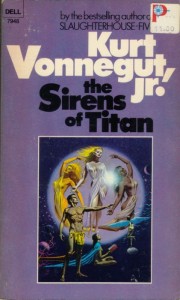Most of us who define ourselves as heavy readers are solitary creatures that have generally known reading to be a solitary activity. As a child and teenager, I embodied the cliché of the moody loner and bookworm that is familiar to most of us through film, television, or our own real lives. Yet there is something utterly powerful about the bond that develops between people over shared affection for great art. And when these bonds develop between readers, they take on unique qualities.
I. Real Space: The Social Purpose of Solitary Reading
Woody Allen once cautioned against going to bed with anyone who doesn’t have good books on their shelves. And indeed, books can serve as litmus tests for another person’s taste, values, and likeability. Most of us are used to assessing other people’s tastes in music, films, etc., though there’s something perhaps even more powerful and accurate about the art of discerning a person’s individuality from the books they love. For instance, when a stranger professes a love for one of your favorite novels, it creates an immediate sense of familiarity. You may not know much about this person, but you know they have traveled and loved at least one literary landscape that’s meant something to you. And that point of mutual appreciation and admiration is just a starting place for authentic, meaningful conversation. For me, finding out a stranger is a Vonnegut fan automatically makes said stranger seem promising. And while arguing about whether Sirens of Titan is better than Slaughterhouse-Five (spoiler alert: it is, but both are great) is a perfectly worthwhile and wonderful conversation, just being able to have that conversation is an assurance that I’ve actually met someone interesting.

Knowing someone else’s books-in-common with yours implies a certain intimacy. A mutually-adored author or work can give two people who otherwise know very little about one another a look inside the other person’s head. For instance, I once knew I’d love someone based solely on his admitted obsession for the late, great David Foster Wallace‘s A Supposedly Fun Thing I’ll Never Do Again. In a world where readers are an increasingly rare species, these glimpses and connections are particularly precious. That aforementioned someone is still my best friend, after all.
II. Digital Space
While the interactions I’ve described so far have taken place squarely in the real world, there are places where they’re recreated online. I’ve barely gotten my feet wet in the online world of social reading, but here are some basic impressions of what I’ve found:
* GoodReads: A social network by readers, for readers. The site encourages discovering new books, looking at what others are reading, and reviewing what you’ve read. This post was originally inspired by Kevin Eagan’s comments on GoodReads this week on his blog. If you’re curious, he has much more experience on the site than I do.
* The Blogosophere: While readers have also appropriated other forms of social media, the blogosphere has encouraged a subset of lit nerds and writers to blog about their reading. Kevin Eagan, mentioned above, is an academic who does just that. But some of the bigger brand names in the print literature/publishing business have moved online as well. The Paris Review has a great blog with several writers, and the McSweeney’s Internet Tendency is another example of high-quality literary names gone digital.
* Comment Sections: Rather than a specific site, this is just an aspect of social reading that’s developed in our day-to-day consumption of written material online. Whether in terms of news articles, blogs, or online versions of real-world periodicals, commenting is driven by the same factors that motivate other social reading. While the literary world is a smaller nitch, commenting is ubiquitous, and those who develop social reading sites would do well to be informed by the norms of threaded comment conversations.
